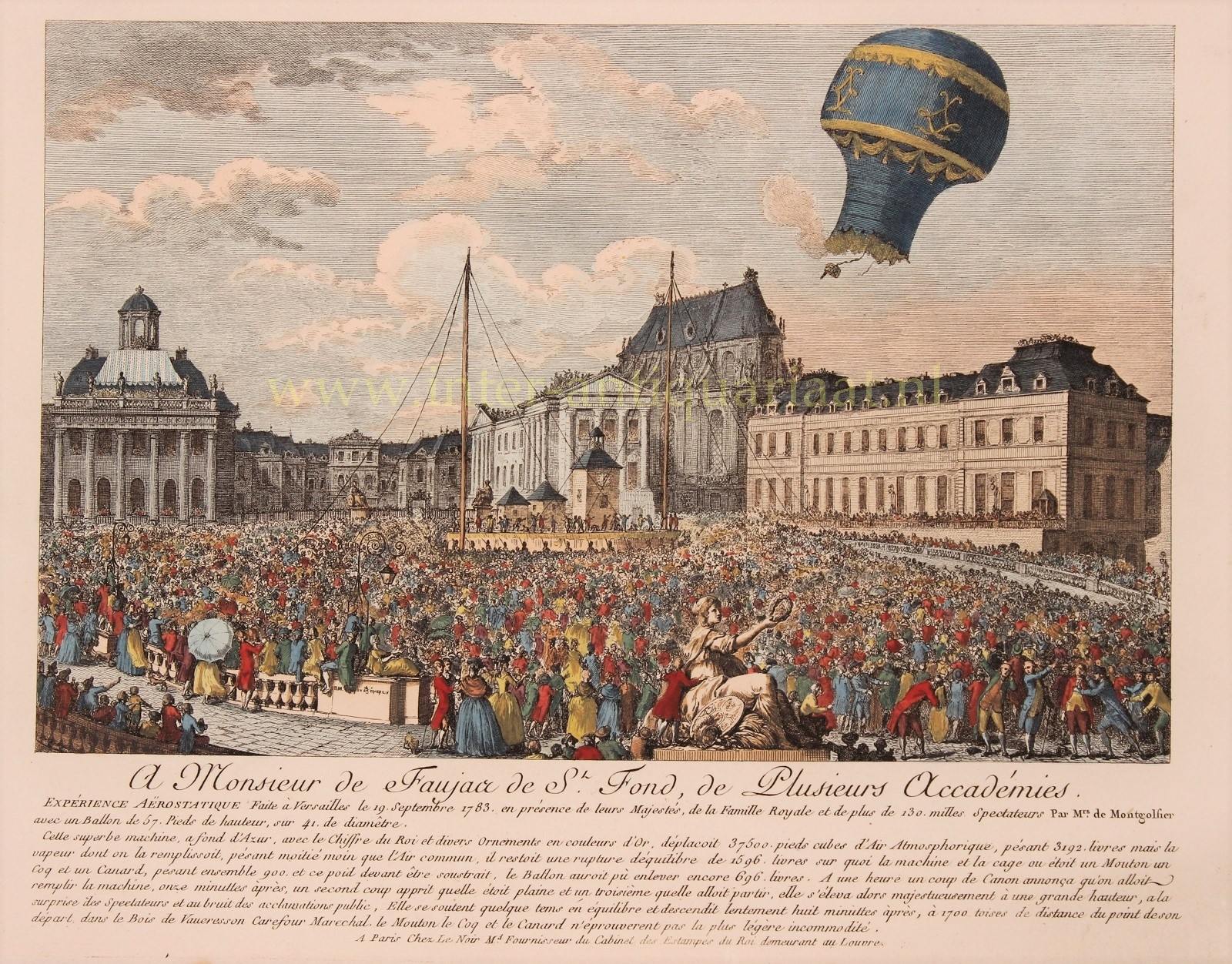FIRST ANIMALS TO FLY IN A BALLOON
“A Monsieur de Faujau de St. Fond, de Plusieurs Accadémies” [To Monsieur Faujau de Saint-Fond, of several academies], etching published by Le Noir in 1783. Coloured by a later hand. Size (platemark): 25,4 x 34,7 cm (scene: 18,5 x 28,7 cm).
The invention of the balloon struck the men and women of the late 18th century like a thunderbolt. The Montgolfier brothers, Joseph-Michel and Jacques Etienne, launched the air age when they flew a hot air balloon from the town square of Annonay, France, on June 4, 1783. Members of a family that had been manufacturing paper in the Ardèche region of France for generations, the Montgolfiers were inspired by recent discoveries relating to the composition of the atmosphere. Joseph led the way, building and flying his first small hot air balloons late in 1782, before enlisting his brother in the enterprise.
Impatient for the Montgolfiers to demonstrate their balloon in Paris, Barthélemy Faujas de Saint-Fond, a pioneering geologist and member of the Académie Royale, sold tickets to a promised ascension and turned the money over to Jacques Alexandre-César Charles (1746-1823), a chemical experimenter whom he had selected to handle the design, construction and launch of a balloon. Charles flew the first small hydrogen balloon from the Champs de Mars, near the present site of the Eiffel Tower, on August 27, 1783.
Not to be outdone, the Montgolfiers sent the first living creatures (a sheep, a duck and a rooster) aloft from Versailles on September 19. This particular scene is to show off to Faujas de Saint-Fond:
“Aerostatic experiment made in Versailles on September 19, 1783 in the presence of their majesties of the royal family and more than 130,000 spectators. By the gentlemen of Montgolfier with a balloon of 57 feet high by 41 feet in diameter. This superb azure-bottomed machine, with the king’s cipher and various ornaments in gold colour, displaces 37,500 cubic feet of atmospheric air. Weighing 3,192 livres but the vapor with which it was filled, weighing half as much as the outside air. There remained a break of balance of 1,596 livres on which the machine and the cage that held a sheep, a rooster and a duck, weighing together 900 livres and this weight having to be subtracted, the balloon could have removed another 696 livres. At one o’clock a cannon shot announced that the machine was going to be filled, 11 minutes later, a second shot revealed that it was full and a third that it was going to leave. It then rose majestically to a great height, and to the surprise of the spectators and to the sound of the public acclamations, it supported itself some time in equilibrium and descended slowly 8 minutes later, covering 1,700 fathoms of distance from the point of its departure to the Wood of Vaucresson Carefour Marechal. The sheep, the rooster and the duck did not experience the slightest inconvenience.”
It helped demonstrate that balloon flight was safe for humans. Pilatre de Rozier, a scientific experimenter, and François Laurent, the marquis D’Arlandes, became the first human beings to make a free flight two months later on November 21, 1783.
Price: VERKOCHT


